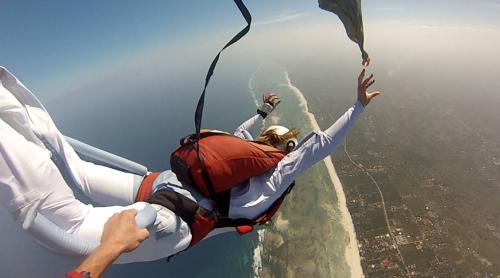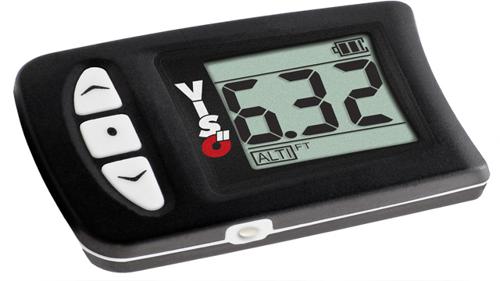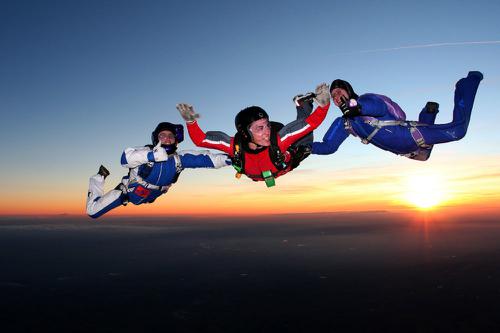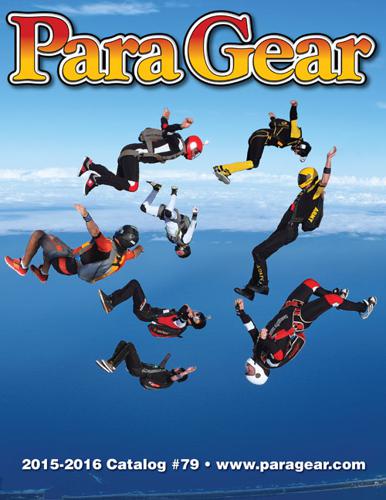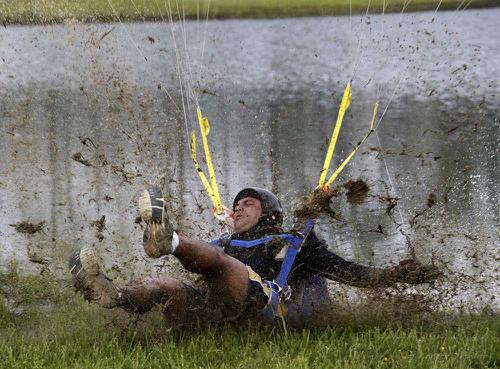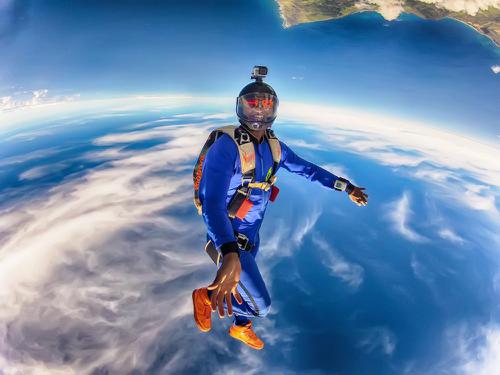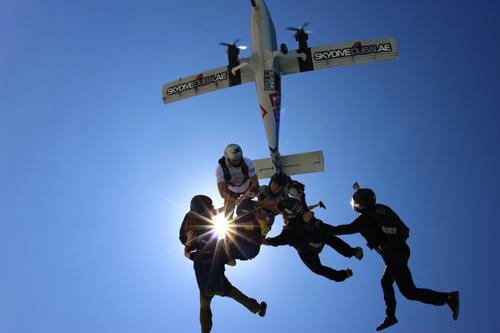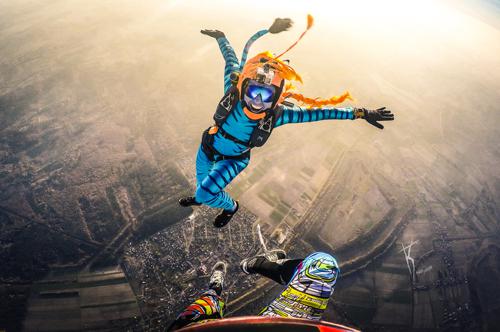The Journey of an AFF Student - Part 2
This article follows a previous article of an AFF journal submitted by John McDarby. We hope sharing this series of articles detailing the experience of his journey may be able to provide some insight into those looking to do their AFF course, while also entertaining those who have been through the process.
Image Credit / Link
Sunday 26th April
Well, that sure was something else. Nothing like the tandem at all - totally different.
Really weird but, I had no fear whatsoever - it was all "focus on the tasks" I just didn’t have the time to fear.
I was nervous going up and one of the instructors saw it and told me to smile - that it forces you to be happy and helps get rid of nerves – it works!
He then told me to close my eyes and visualise the dive from start to finish - that really was a good idea and I shall continue to do that
Then at about 11k feet the pilot gave a two minute notice for the door.
Everyone started doing high fives and fist pumps to each other - it really was awesome.
Eight of us squashed into a ford fiesta (or tiny car of your choice), all about to jump from 12,000ft - it felt very special - like I was part of a very elite club that nobody else knows - it felt great.
My two instructors and I were last out as we were deploying highest. Two head down flyers went first as they would be the fastest fallers and lowest deployments. Then 2 sit flyers, then a solo guy with about 20 jumps - he was just chilling out – we have become good friends since and he has helped me, mentally on many of my subsequent jumps
Then us...
I had no nerves at all - I just kicked right into my routine and thought of nothing else
I actually didn’t even see the ground until I deployed - head up, looking at the horizon all the time - you don’t look down ever – In fact, it wasn’t until my first consolidation jump that I had both the time and the peace of mind to have a look about.
So I did the exit, really well - I was delighted with that – we were stable faster than I expected.
Then I did my COA - circle of awareness – check heading, check altimeter, check left instructor, check right instructor to ensure we're all set and ready to begin tasks - all good, let’s do it
Then began my 3 practice touches - check alti, arch, reach for pilot chute handle, squeeze, recover.
Do that 3 times to show that you know where the pilot chute for deployment is and that you can get to it yourself and that you actually have the wherewithal and you’re not phased out.
Sensory overload is a big one on AFF1 so perhaps my previous tandem helped with this.
That’s all that is required of AFF1 to pass, that and the actual deployment - and I did it with about 2000ft to spare - that’s about 10secs of freefall - the instructors said to me afterwards that they deliberately kept throwing hand signals at me for those 10 seconds to see how I would react to being overloaded.
I got some of them but I missed some too - just too much information coming at me - but that wasn’t part of the dive - it was just extra stuff
My main side instructor said afterwards during debrief "ah, you just ignored me - I saw you looking and just rolling your eyes"
Ha ha – there is probably an element of truth in that.
So I "locked in" at 6000ft and then deployed at 5500ft - and then it’s the longest 4 second count in your life Count 4 thousand and look up and hope to goodness it’s all there and looking good - which it was.
I chilled then for a moment to let the adrenaline settle and then commenced my checks – I should have done them immediately but I was really overwhelmed to say the least - I’d guess I was about 3-5 seconds at most before I did my harness checks and twists checks – all good, phew!
Next up, I released the toggles for steering and pulled 3 good flares to get a feel for it, as instructed.
Then a quick alti check - just about 5000ft - Jesus, it’s a long way down when you’re hanging there alone.
So I pulled a hard left and dived down to the left, then another to the right, then a few circles around - all to get a feel for the canopy as I need to know how it will handle when coming in to land
It was very stable and comfortable and turned when I asked it to – as I discovered later, of course it was stable, it was 260sqft – Godzilla could have jumped this canopy..
At about 3000ft the radio came crackling in my ear with the instructor telling me directions – I’d forgotten about those guys – lovely to hear a guiding voice right now.
But it cracked out at about 1000ft and I couldn’t hear him – however, I already had my flight plan worked out
Be over the hanger at 1000ft, then downwind along the tree line to 600ft then hard right 90 degrees and down to 300ft across the wind then 90 degrees into the wind for final approach – we had been through that on the ground and I’d watched a bunch of jumpers before me to see it in action.
It was really bumpy and I got thrown about but it was all about keeping it steady with minimal inputs under 300ft - just go straight and let it fly itself down.
The instructor said afterwards that no other students would be flying today and that it was right on the edge for students but that my (cough), mass, was an advantage for such conditions!
So I landed on my feet, all excited and relieved but then a gust of wind grabbed the canopy and I was on my butt and dragged backwards - I got it sorted and that was it, gathered it up and walked over to the hanger - where a bunch of them laughed at me and took the piss - but in a friendly way.
One guy came up to me "what number AFF was that?" I told him number one, and he stuck his hand out for a shake "welcome to the club, man"
I felt so chuffed.
I was part of an elite club.
Brilliant, brilliant experience.
Then one of my instructors went through the video with me pointing out both good and bad things of the dive
He got some other students over to view it also as they were unable to jump due to the wind
Then we got the creepers (like skateboards) out and we (4 students) started to practice AFF2 dive flow - It’s much the same but with some added turns - which are new to us.
We will have to do 90 degree turns both left and right - then a kind of "head first" position a bit like superman but hands back (later to be informed, tracking) and then back to standard stability and recover.
I wasn’t ready to do it again today even if I could - too much information to take in and I want to do the dive over and over first because it’s hard to think when in freefall - it’s so extreme.
Things need to be more instinctive first for me.
Next weekend looks like a wash out.
So hopefully the week after.
But oh boy, what a buzz - I may well have found what I was looking for.
Part 3 will be published shortly, keep an eye out on the dropzone.com homepage to follow John's journey through AFF

